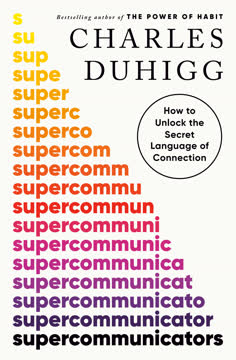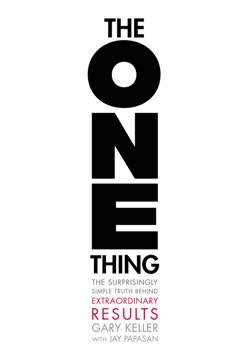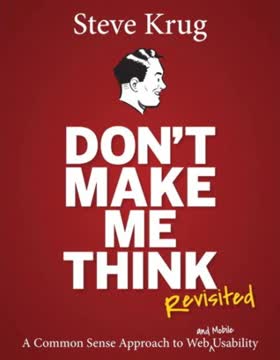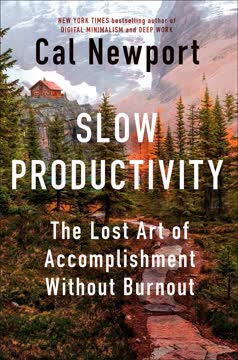Key Takeaways
1. Identify your sweet spot: Combine knowledge, passion, and audience
The sweet spot is the intersection of a knowledge or skill area and a passion point.
Knowledge + Passion + Audience = Sweet Spot. The first step in the Content Inc. model is to identify your unique sweet spot. This involves combining your expertise in a particular area with something you're passionate about, and then aligning it with a specific audience's needs. For example:
- Matthew Patrick (Game Theory) combined his knowledge of math and analytics with his passion for gaming
- Ann Reardon (How to Cook That) merged her food science background with her love for baking
- Andy Schneider (Chicken Whisperer) united his expertise in backyard poultry with his passion for teaching
To find your sweet spot:
- List your areas of knowledge or skill
- Identify your passions
- Define a specific audience that would benefit from this combination
2. Develop a content tilt to stand out in your niche
Without "tilting" your content just enough to truly have a different story to tell, your content will fade into the rest of the clutter and be forgotten.
Differentiation is key. The content tilt is what separates you from everyone else in your market. It's your unique perspective or approach that makes your content stand out. To find your content tilt:
- Analyze your competition and identify gaps in the market
- Consider unconventional angles or perspectives on your topic
- Use tools like Google Trends to discover rising interests in your niche
Examples of effective content tilts:
- Claus Pilgaard focusing on the taste of chili peppers instead of just heat
- River Pools & Spas becoming the go-to resource for fiberglass pool information
- Ann Reardon creating seemingly impossible food designs
3. Build a consistent content base on one primary platform
The greatest media entities of all time selected one primary channel in which to build their platform.
Consistency breeds success. Once you've identified your sweet spot and content tilt, focus on building a strong content base on one primary platform. This could be a blog, podcast, YouTube channel, or other medium. Key points to remember:
- Choose a platform that aligns with your strengths and audience preferences
- Develop a consistent publishing schedule
- Create high-quality, valuable content that serves your audience's needs
Best practices for building your content base:
- Set clear editorial guidelines
- Use an editorial calendar to plan and organize content
- Ensure all content aligns with your overall mission and strategy
4. Focus on harvesting an engaged subscriber audience
The Content Inc. model only works if you can build a loyal audience of subscribers over time. Period.
Subscribers are your most valuable asset. Building a loyal, engaged audience is crucial for the success of your Content Inc. model. Focus on converting casual readers or viewers into dedicated subscribers. Strategies to grow your subscriber base:
- Offer exclusive content or incentives for subscribers
- Use lead magnets like e-books or webinars to capture email addresses
- Consistently deliver value to keep subscribers engaged
Prioritize subscriber types based on control:
- Email subscribers (most control)
- Print subscribers
- Social media followers (least control)
Remember: It's not just about quantity, but quality of engagement with your audience.
5. Diversify your content across multiple channels
The greatest media brands in the world leverage not only digital, but in-person and print components as well.
Expand your reach. Once you've established a strong base on your primary platform, begin diversifying your content across multiple channels. This helps you reach a wider audience and creates more opportunities for engagement. The "three and three" model suggests focusing on:
Personal brand building:
- Blog
- Book
- Speaking engagements
Business expansion:
- Digital content
- Print content
- In-person events
Examples of successful diversification:
- Content Marketing Institute: blog, magazine, podcast, events
- Michelle Phan: YouTube, book, makeup line, music label
6. Monetize your audience through various revenue streams
There are many ways to make money from your content and subscribers.
Multiple revenue streams create stability. Once you've built a loyal audience, explore various ways to monetize your platform. Don't rely on just one source of income. Common monetization strategies include:
- Advertising and sponsorships
- Subscriptions and premium content
- Conferences and events
- Product sales (physical or digital)
- Consulting and services
- Affiliate marketing
Key considerations for monetization:
- Ensure monetization efforts align with your audience's needs and expectations
- Start with low-hanging fruit, then expand to more complex revenue streams
- Continuously test and optimize your monetization strategies
7. Practice patience and persistence in your Content Inc. journey
Be patient.
Success takes time. Building a successful Content Inc. business requires patience and persistence. Many entrepreneurs give up too soon, not realizing that it often takes years to see significant results. Key points to remember:
- Focus on consistently delivering value to your audience
- Monitor key metrics, but don't obsess over short-term results
- Be willing to pivot or adjust your strategy as needed
Success stories that required patience:
- Content Marketing Institute: Started in 2007, became profitable in 2011
- Copyblogger: Took 19 months to launch first product
- Digital Photography School: Focused on beginners for two years before expanding
Remember: The Content Inc. model is a marathon, not a sprint. Stay committed to your vision and keep pushing forward, even when progress seems slow.
Last updated:
FAQ
What's Content Inc. about?
- Audience First Approach: Content Inc. by Joe Pulizzi emphasizes building a loyal audience before developing products or services. This audience-first strategy is central to the book's content marketing model.
- Six-Step Model: The book introduces a systematic six-step model: identifying a sweet spot, creating a content tilt, building a base, harvesting an audience, diversifying content, and monetizing the audience.
- Real-World Examples: Pulizzi includes numerous case studies of successful entrepreneurs who have implemented the Content Inc. model, showcasing its effectiveness across various industries.
Why should I read Content Inc.?
- Proven Strategies: The book offers actionable strategies for leveraging content to build a business, making it a valuable resource for both new and experienced entrepreneurs.
- Inspiration from Success Stories: Readers will find motivation in the success stories of individuals who have transformed their passions into profitable businesses using the Content Inc. model.
- Comprehensive Framework: Content Inc. provides a framework applicable to various business models, making it relevant for a wide audience, from solo entrepreneurs to larger organizations.
What are the key takeaways of Content Inc.?
- Build an Audience First: Entrepreneurs should focus on building an audience before creating products, increasing the likelihood of business success.
- Content Tilt is Essential: Differentiating your content through a unique angle or niche is crucial for attracting a specific audience.
- Monetization Comes Later: Establishing a loyal audience should precede monetization efforts, laying a foundation for future revenue generation.
What is the "sweet spot" in Content Inc.?
- Intersection of Knowledge and Passion: The "sweet spot" is where an entrepreneur's knowledge or skill intersects with their passion, crucial for creating resonant content.
- Example of Success: Pulizzi highlights entrepreneurs like Andy Schneider, who combined his knowledge of backyard poultry with his passion for teaching, leading to authentic content.
- Foundation for Content Strategy: Understanding your sweet spot guides your content strategy, ensuring your content is meaningful and valuable to your audience.
What is a "content tilt" and why is it important in Content Inc.?
- Unique Differentiation: A "content tilt" is a unique angle that differentiates your content from others, helping you stand out in a crowded market.
- Filling Content Gaps: It allows you to identify and fill gaps in existing content, addressing topics competitors may overlook, leading to increased engagement.
- Example of Effective Tilt: Pulizzi cites Claus Pilgaard, who focused on the taste of chili peppers rather than just their heat, as a successful content tilt example.
How do I build a content base according to Content Inc.?
- Choose a Primary Platform: Select a primary platform for content distribution, such as a blog, podcast, or YouTube channel, to serve as your content base.
- Consistency is Key: Regularly publish valuable content to build an audience, establishing a schedule to keep your audience engaged.
- Engage with Your Audience: Actively interact with your audience through comments and social media, fostering a community around your content.
What metrics should I focus on in Content Inc.?
- Subscriber Growth: Focus on subscriber growth as building a loyal audience is crucial for the Content Inc. model's success.
- Engagement Metrics: Monitor engagement metrics like comments, shares, and time spent on content to gauge audience resonance.
- Conversion Rates: Track conversion rates to assess how many subscribers take desired actions, helping evaluate monetization strategies.
How can I diversify my content according to Content Inc.?
- Expand Content Types: Once you have a loyal audience, diversify content types, including videos, podcasts, infographics, and e-books.
- Leverage Multiple Channels: Use various distribution channels to reach a broader audience, such as sharing blog posts on social media or creating video summaries.
- Collaborate with Others: Engage with guest contributors or influencers to bring fresh perspectives and new audiences to your content.
What are some effective content ideation strategies from Content Inc.?
- Conduct a Content Audit: Audit existing content to identify gaps and opportunities, understanding what resonates with your audience.
- Ask Your Audience: Engage directly with your audience to gather questions and topics of interest, providing valuable insights for future content.
- Utilize Google Trends: Use tools like Google Trends to identify rising topics and keywords, guiding your content ideation process.
How do I create a content calendar as suggested in Content Inc.?
- Outline Key Elements: Include publication dates, topics, authors, and content types in your content calendar for organization and consistency.
- Use Tools for Management: Consider tools like Trello or Google Sheets to manage your calendar effectively, streamlining your workflow.
- Plan Ahead: Regularly review and adjust your content calendar to stay flexible and responsive to audience needs or industry trends.
What is the collaborative publishing model in Content Inc.?
- Engaging Contributors: Recruit outside contributors to create content for your platform, leveraging diverse perspectives and expertise.
- Benefits of Collaboration: Attract new audiences and fill content gaps, fostering a sense of community and ongoing engagement.
- Establishing Guidelines: Set clear guidelines for contributors to ensure content aligns with your brand's mission and maintains quality.
What are the best quotes from Content Inc. and what do they mean?
- “Without an audience, your Content Inc. strategy will not work.”: Highlights the importance of building a loyal audience as the foundation for any content marketing strategy.
- “Focus on the metrics that help you build an opt-in audience.”: Emphasizes tracking meaningful metrics like subscriber growth and engagement over vanity metrics.
- “Be patient.”: Stresses that building a successful content strategy requires time and consistent effort, underscoring the need for patience.
Review Summary
Content Inc. receives generally positive reviews, with readers praising its practical advice for content marketing and building audience-focused businesses. Many find it valuable for entrepreneurs and marketers, offering actionable strategies and case studies. Some criticize it for being too basic for experienced marketers or lacking depth in certain areas. The book's emphasis on building an audience before monetization resonates with many readers. Overall, it's seen as a useful guide for those looking to leverage content in their business strategy, though opinions vary on its effectiveness for different experience levels.
Similar Books










Download PDF
Download EPUB
.epub digital book format is ideal for reading ebooks on phones, tablets, and e-readers.







